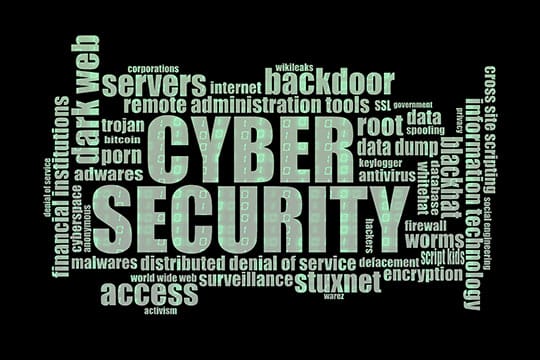Cybersecurity policies are, in some ways, a form of legal boilerplate, with the place of liability on the policy writer. But like all legal writing, nothing is obviously right nor wrong. So, it’s easy to say that you need a cybersecurity policy. It’s harder to get there. Here are 17 steps toward creating a high-quality cybersecurity policy that doesn’t suck.
We all know the importance of cybersecurity, especially for organizations that handle highly sensitive information. After all, the losses from just one data breach can have a crippling effect on your company. But even with the potential consequences of a breach in mind, writing an effective cybersecurity policy can be a challenge.
There are many factors to consider when creating your policy, such as how to handle reporting breaches or what the procedure should be if an employee loses their mobile device. The best way to ensure you’re covering all of the bases is to start with these 17 tips:
1. Don’t fudge it!

You may be tempted to skip this step. But if you’re going to implement a cybersecurity policy, it needs to be clear and thorough. If some parts of the policy read like they were meant for another system or were written by someone other than you, it just isn’t going to work. Make sure that each section is short and clearly addresses any questions your employees might have.
Recommended for you: 7 Ways How Human Error Can Cause Cybersecurity Breaches.
2. Don’t overcomplicate it!

On the other hand, if you attempt to address every possible situation in your cybersecurity policy, it’s almost guaranteed that no one will ever read it completely. And what good is a policy if nobody knows there’s one? Keep things simple so that people don’t feel difficulty.
3. Make it fun!

Some people may not realize it. But if you make a cybersecurity policy fun, more people will actually read it and try to learn from it. It doesn’t take much; just add some jokey language here and there or include some silly pictures of cats in the appendix. This small touch will make all the difference in making sure everyone gets on board with following the rules!

4. Link it to rewards!

If you want people to follow a cybersecurity policy, link it to something they really want (like getting a raise). Don’t just hand out raises at random, make them dependent on how well employees have adopted your rules and guidelines. You’ll motivate them even more than just promising them a raise on its own would have!
5. Make sure you get buy-in from everyone involved

It’s no good if a bunch of people knows that they’ll be held responsible for following the policy and it makes them nervous – if they don’t feel like they have been involved in its creation and they aren’t on board with it, then they won’t follow it. Include them in the process; make sure that no one feels left out so that these policies will work best for everyone.
6. Start with ‘Why’

Write down the reason(s) why your business has put together this document. For example, if you’re worried about being hacked, include “ensure our company’s security” as part of your company’s mission statement and then focus on keeping your network safe from hackers.
7. Know your audience

Who are you trying to keep safe with this document? Are you trying to protect customers or employees? What about both? Defining your audience helps you know who should be reading this policy and will also help you decide what language to use in certain sections of the document.

8. Use “network perimeter” instead of “firewall”

It may seem like a small change but using the word firewall immediately puts your audience on the defensive. The more technical they are, the more they will recognize firewall as a term used only by those on the inside of the network. For everyone else, it’s a confusing word that sounds like it belongs in a different field.
Also, if you want to avoid getting into complicated discussions about what exactly constitutes your “network”, you’ll want to use language that is less definitive than “network perimeter”.
9. Don’t use the word “hacker”

Except when referring to someone with extensive knowledge of computers or networks who uses their skills for illegal purposes. This word only refers to computer criminals, so there’s no need for it in the rest of your document and it will create confusion for your readers.
Use the term “attacker”. It should be obvious that an attacker has ill intent, while a hacker simply enjoys finding ways to exploit software and hardware for fun and profit!
10. Use “data” instead of “information”

This may sound counterintuitive since “information” is technically a subset of “data”, but you want people to think of data as something with intrinsic value while information has no real value until it’s analyzed or combined with other pieces of information.
Data is a more modern word for information and is also more precise. Information can be any manner of data, but data is always structured in some format. For instance, it could be numbers stored in a spreadsheet file, a series of files on a server directory, or even just plain text (i.e., the contents of this article).
The word data is easier to understand because it directly refers to the specific format while not implying that it’s necessarily complete or complex.
You may like: Documents and Protocols Your Business Needs for Cybersecurity.
11. Don’t use the word “vulnerability and weakness”

Using words that have negative connotations can make your writing sound unprofessional. Vulnerability or weakness can be perceived as negative words by your readers and thus should not be used in a security policy. The same goes for any other word that might be considered a negative word such as compromise or threat.

It is better to use words that have positive connotations like strength or protection. This helps establish a positive tone from the beginning and helps direct your readers’ attention towards what you want them to focus on: the positive aspects of writing a security policy.
12. Use “software”, not “application” or “app”

The word “software” is more professional and less likely to be misused than any of these other terms, which are often confusing. For instance, an application is used on your computer to run programs, while an app is something like a mobile phone app that you use for playing games or tracking calories (which is NOT what you want to be thinking about when considering cybersecurity issues).
13. Use “relational database”, not “relational database management system” or (i.e., Oracle)

Don’t let specific brands take over your document! The idea here is to be descriptive rather than brand specific. And trust us, if you’re writing this policy for an office in a school or business complex with many employees, you’ll be glad you did because everyone will understand what you mean by a relational database even if they use different brands in their day-to-day work lives.
14. Go easy on the jargon

Most policies are meant for non-technical staff and management, so try to explain technical terms in layman’s terms whenever possible. Don’t make people have to look up words they don’t know in order to understand what you’re trying to say. The policy should be accessible enough that they can simply read through it without having to consult an outside source every few sentences.

15. Understand your goals

If you’re trying to protect yourself from financial loss or being sued, then it makes sense to implement certain restrictions. However, if you’re trying to protect yourself from lawsuits due to employee negligence or action (i.e., someone accessed data that caused harm to third parties), then it’s less likely that you’ll need as many restrictions as possible.
16. Make it short

Users have short attention spans. If your policy is more than one page, it’s too long; and if it’s more than five pages, it’s probably too long for most people to bother reading at all. Nobody wants to read an encyclopedia when they’re trying to learn something new – even if you’re trying to educate them about something really important! Keep things simple and easy to read by keeping your policy as concise as possible.
17. Understand your risks

In order to design an effective cybersecurity policy, an organization needs to understand which data is most important to them. Be prepared for the worst-case scenario regarding how that data could be impacted by a cyber-attack. Every company is different. For example, a small business may not have access to trade secrets or sensitive financial information; although it’s still important for them to protect the information they do possess.
You may also like: How is Machine Learning Used in Cybersecurity?
Conclusion

When put into practice, these tips should help make the process of writing a formal cybersecurity policy much less intimidating and stressful. From creating a theme to keeping it simple and easy to understand. They will hopefully make all the difference. So, when you are ready to tackle your cybersecurity policy make sure that you take these 17 tips into consideration; they should greatly improve your final product.
This article is written by Jasmine Pope. Jasmine is a very competent writer who is noted for her ability to create compelling content. She writes about current events and conducts in-depth studies on relevant topics. Many aspiring writers have been encouraged by her devotion and upbeat outlook. She stayed active on various academic websites like Perfect Essay Writing, where she shared her knowledge with students and professors.





